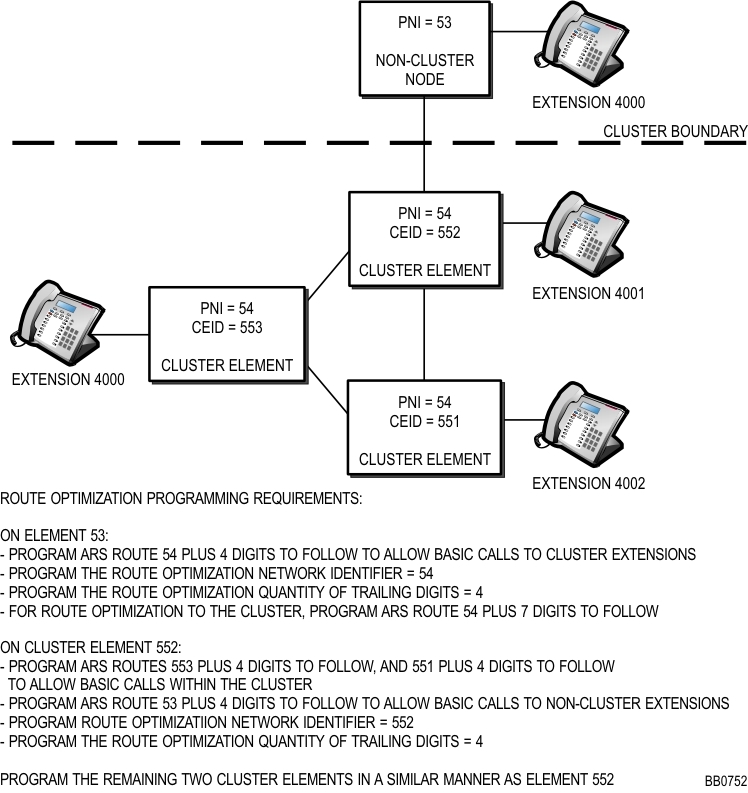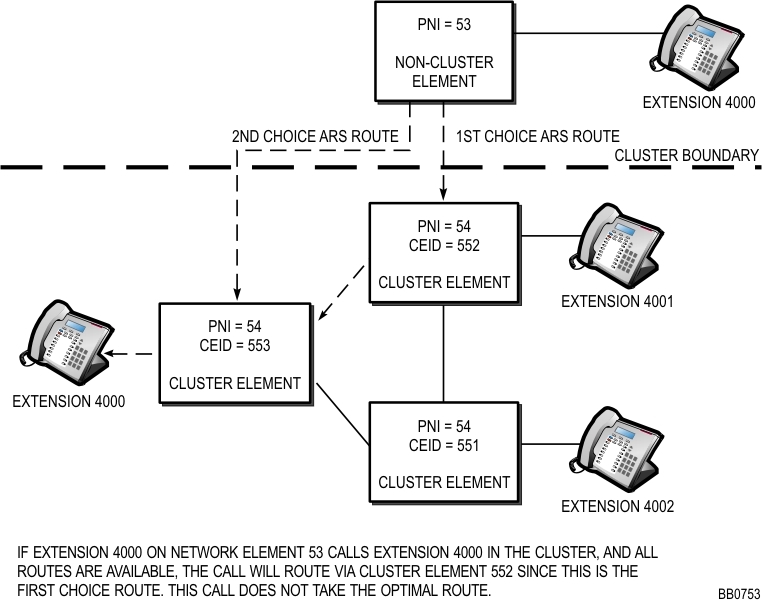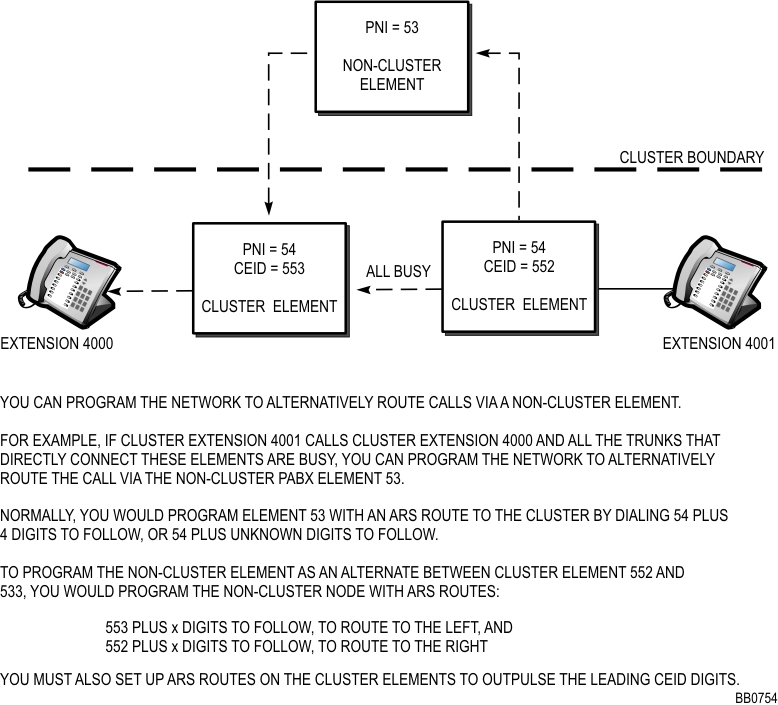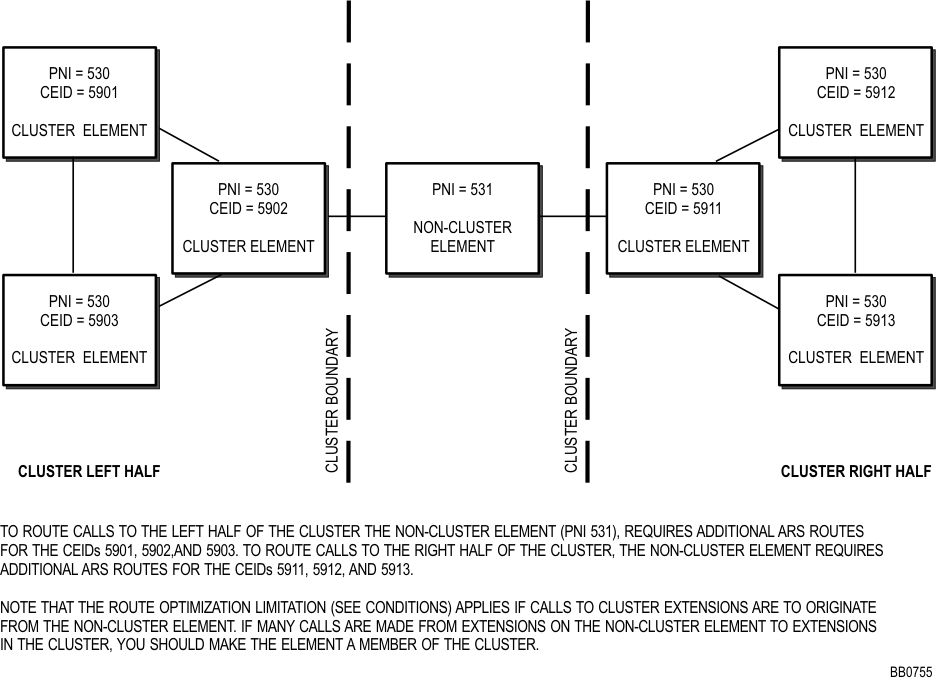
To optimize routing within a cluster, and between a cluster and the rest of the network, you must complete the following programming:
Ensure that ARS routes within the cluster are set up to outpulse the leading CEID digits.
At each non-cluster element in the network, program the route optimization network identifier the same as its PNI. You program the route optimization network identifier in the System Options form.
At each cluster element, program the route optimization network identifier the same as its local CEID digit string. On a cluster element, the route optimization request "return address or destination" (i.e., ROP_R parameter) is automatically prefaced with the cluster element's PNI, if a PNI is programmed.
For each non-cluster element in the network, program an additional ARS route to each different cluster in the network. This additional route must accept the cluster PNI followed by a digit length equal to the cluster's CEID digit length plus the number of route optimization trailing digits. The number of route optimization trailing digits is programmed in the System Options form.
Figure 1 shows an example of how to program route optimization within a cluster:
Figure 1: Example of Route Optimization

If a cluster is interconnected to a non-cluster element by more than one DPNSS route, route optimization may not occur. Route optimization may not occur if the call follows only first choice routes and the first choice route results in a non-optimal route due to internal cluster routing. However, if any internal cluster routing takes a non-first choice route, route optimization is attempted. Figure 2 shows an example of this limitation.
Figure 2: Limitations of Route Optimization

To provide alternate routing through a non-cluster element, you must add additional ARS routes to the non-cluster element to properly route the call. See Figure 3.
Figure 3: Alternate Routing Through a Non-cluster Element

You can also use alternate routing through a non-cluster element that interconnects two halves of the same cluster. This type of routing requires additional ARS routes for the cluster's CEID digits to appropriately route calls to either side of the cluster. Figure 4 shows an example of this type of call routing.
Figure 4: Alternate Routing for Dispersed Clusters

IP networking restrictions limit the number of simultaneous connections that a single 3300 ICP can support to 250. As a result, larger cluster sizes cannot easily support a fully meshed configuration in which each element is connected to every other element by an IP trunk. For such clusters, a multi-hub configuration that uses transit nodes to route calls between peripheral elements is recommended. Figure 5 is an example of this type of configuration.
Figure 5: Multi-hub Cluster Configuration

